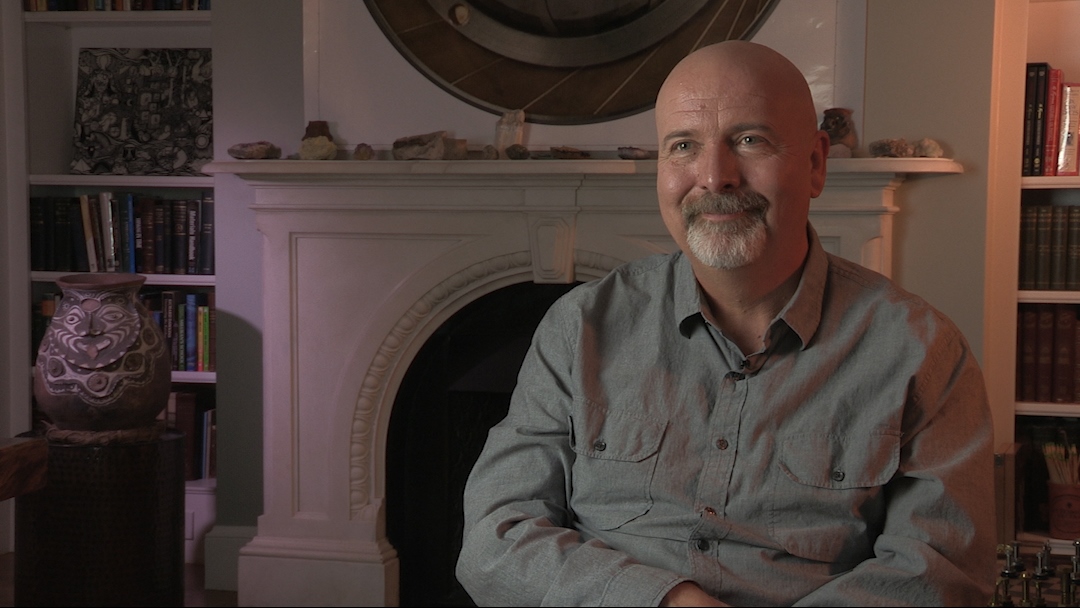NEXT STORY

How Thinking Machines started
RELATED STORIES

NEXT STORY

How Thinking Machines started
RELATED STORIES


|
Views | Duration | |
|---|---|---|---|
| 101. Calculators and computers are the future | 137 | 01:33 | |
| 102. 'I think I want to do what he does': Alan Kay | 167 | 02:33 | |
| 103. Getting to know people before they were famous | 165 | 03:59 | |
| 104. Meeting Freeman Dyson | 357 | 02:48 | |
| 105. Richard Feynman and Thinking Machines | 462 | 02:17 | |
| 106. Richard Feynman – quartermaster for the stationery | 298 | 01:27 | |
| 107. Neurobiology and fast computing | 172 | 02:17 | |
| 108. How Thinking Machines started | 180 | 03:10 | |
| 109. Proving Amdahl's Law wrong | 326 | 02:24 | |
| 110. Thinking Machines – my second education | 151 | 03:22 |


There was definitely the old school, like Jerry Lettvin, who were still trying... still talking about McCulloch and Pitts. You know, they weren't there by the time I was there. But the AI people were kind of the new school. But one thing that became clear to me right away was that the things that we were trying to do in AI, the computers just weren't nearly fast enough. It wasn't like they were two times too slow, they were thousands of times too slow.
And at that time, the great... the most famous computer architect was a guy by the name of Gene Amdahl, and he had made a sort of mathematical proof that if you tried to make computers faster by using parallel... computers in parallel, that it would get more and more inefficient, as you made more and more of them. And everybody was very convinced by this proof, and in fact they had some empirical evidence that it was true: people had tried to make six processors together, and they weren't six times as fast. But I knew, because I was coming at it from neurobiology that neurons were very, very slow compared to transistors. They took milliseconds to fire. But humans were able to do these things like recognise faces, which it would take us a very, very long time to do on a computer, and clearly we did it just by having a lot of them, and by having billions of neurons working on the problem. And so I thought that, even if Amdahl's law is true for general computing, surely for doing these computations of artificial intelligence, you'd need something like neurons. And so you would need basically lots of little simple processing things that were connected in arbitrary ways and that that would be a good way to do fast computing. And so because I was interested in doing artificial intelligence and general intelligence, I realised you needed to build a machine like this.
W Daniel Hillis (b. 1956) is an American inventor, scientist, author and engineer. While doing his doctoral work at MIT under artificial intelligence pioneer, Marvin Minsky, he invented the concept of parallel computers, that is now the basis for most supercomputers. He also co-founded the famous parallel computing company, Thinking Machines, in 1983 which marked a new era in computing. In 1996, Hillis left MIT for California, where he spent time leading Disney’s Imagineers. He developed new technologies and business strategies for Disney's theme parks, television, motion pictures, Internet and consumer product businesses. More recently, Hillis co-founded an engineering and design company, Applied Minds, and several start-ups, among them Applied Proteomics in San Diego, MetaWeb Technologies (acquired by Google) in San Francisco, and his current passion, Applied Invention in Cambridge, MA, which 'partners with clients to create innovative products and services'. He holds over 100 US patents, covering parallel computers, disk arrays, forgery prevention methods, and various electronic and mechanical devices (including a 10,000-year mechanical clock), and has recently moved into working on problems in medicine. In recognition of his work Hillis has won many awards, including the Dan David Prize.
Title: Neurobiology and fast computing
Listeners: George Dyson Christopher Sykes
Christopher Sykes is an independent documentary producer who has made a number of films about science and scientists for BBC TV, Channel Four, and PBS.
Tags: Gene Amdahl
Duration: 2 minutes, 17 seconds
Date story recorded: October 2016
Date story went live: 05 July 2017